Sheet
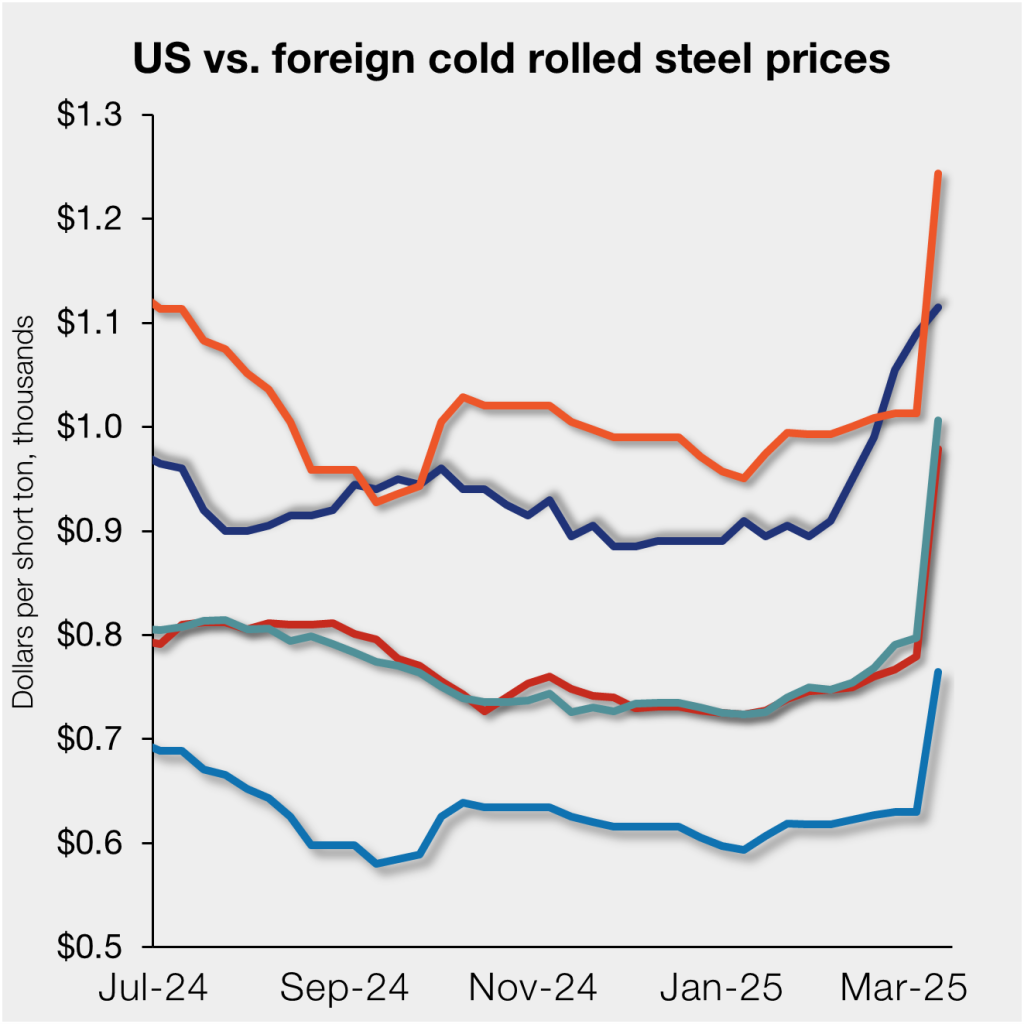
March 14, 2025
Section 232 curbs US CRC price gains over imports
Written by David Schollaert
US cold-rolled (CR) coil prices saw another increase this week, a trend mirrored by offshore prices.
But fully restored Section 232 tariffs on steel on March 12 cut the widening premium US prices had over most imports on a landed basis. A clear shift after the price spread between stateside-produced CR and imports had reached a 14-month high last week.
The premium that stateside tags had over prices abroad fell by nearly 20 percentage points on Wednesday, when S232 tariffs were reinstated.
In our market check on Tuesday, March 11, US CR coil prices averaged $1,115 per short ton (st), up $25/st vs. the prior week. Prices are up $220/st since late January when mills first started increasing prices, initially backed by threats of tariffs.
Domestic CR prices are now, theoretically, 14% higher than imports. That premium is down from 33.9% last week.
In dollar-per-ton terms, US CR is, on average, $117/st more expensive than offshore product (see Figure 1) – that’s a $169/st swing w/w with S232 in effect.
The charts below compare CR coil prices in the US, Germany, Italy, South Korea, and Japan. The left side shows prices over the last two years and the right side zooms in to highlight more recent trends.
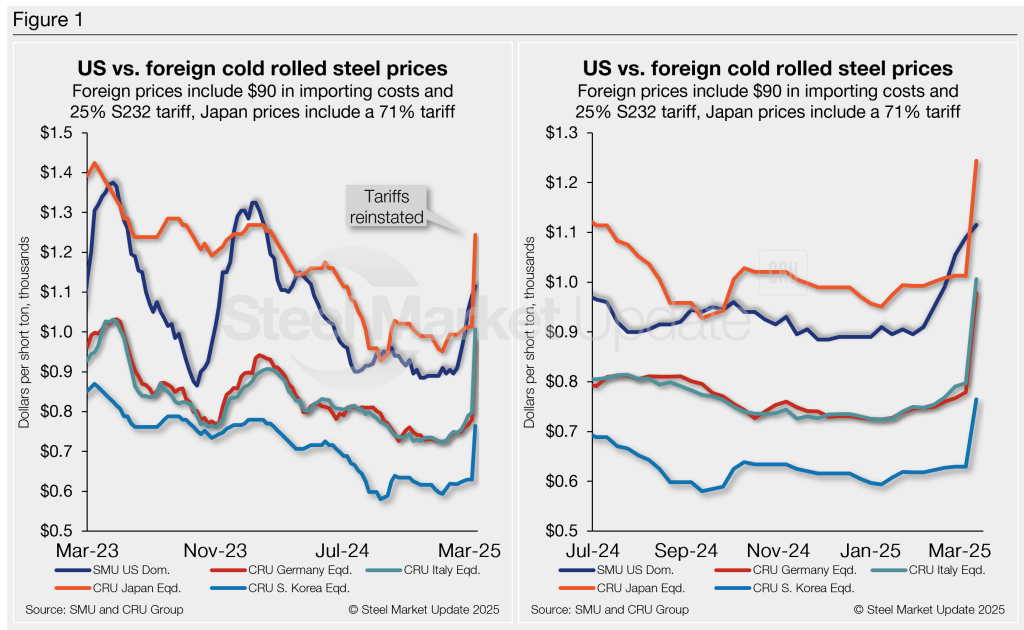
Methodology
This is how SMU calculates the theoretical spread between domestic CR prices (FOB domestic mills) and foreign CR prices (delivered to US ports): We compare SMU’s US CR weekly index to the CRU CR weekly indices for Germany, Italy, and East Asia (Japan and South Korea). This is only a theoretical calculation. Import costs can vary greatly, influencing the true market spread.
We add $90/st to all foreign prices as a rough means of accounting for freight costs, handling, and trader margin. This gives us an approximate CIF US ports price to compare to the SMU domestic CR price. Buyers should use our $90/st figure as a benchmark and adjust up or down based on their own shipping and handling costs. (Editor’s note: If you import steel and want to share your thoughts on these costs, please get in touch with the author at david@steelmarketupdate.com.)
East Asian CR coil
As of Thursday, March 13, the CRU Asian CR price stood $540/st, flat w/w and just ~$7/st higher than a month ago. Factoring in a 71% anti-dumping duty (Japan, theoretical), a 25% S232 tariff, and $90/st in estimated import costs, the delivered price to the US is $1,244/st. The theoretical landed price of South Korean CR exported to the US is $765/st.
With the latest SMU CR price rising by $25/st to an average of $1,115/st, US-produced CR is now theoretically $129/st below Japanese imports but $350/st above South Korean imports. This reflects a w/w shift of $206/st and $135/st, respectively.
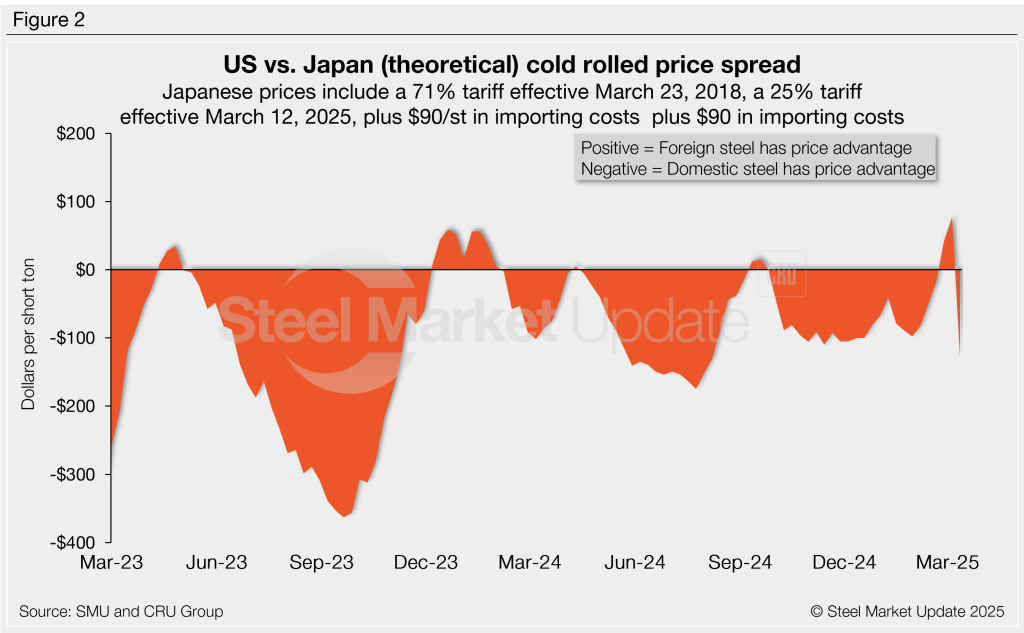
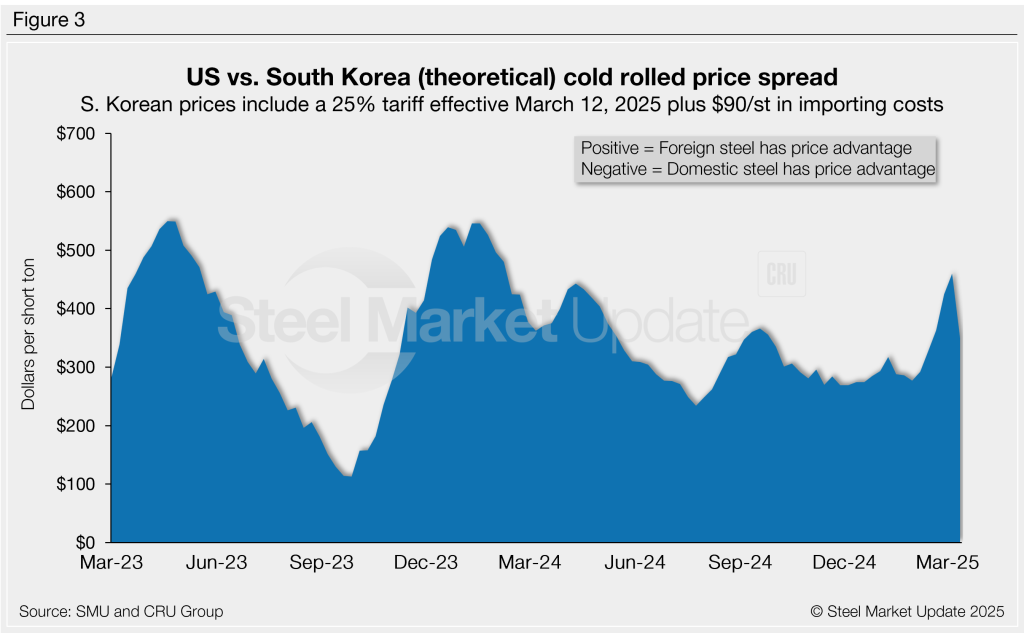
Italian CR coil
Italian CR prices rose $25/st this week to $733/st. After adding import costs, the price of Italian CR delivered to the US is, in theory, $1,006/st.
That means domestic CR is still theoretically $109/st more expensive than CR coil imported from Italy. The spread is down $183/st vs. last week and now ~$339/st below a recent high of $448/st a year ago.
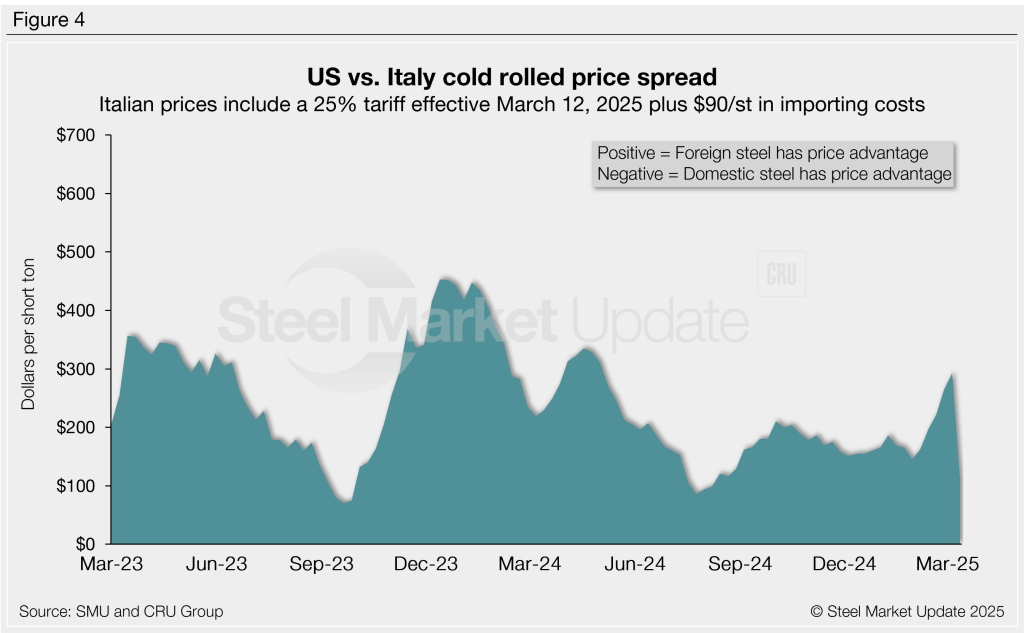
German CR coil
CRU’s German CR price was up $22/st vs. the previous week. After adding import costs, the delivered price of German CR is, in theory, $979/st.
The result: Domestic CR is theoretically $136/st more expensive than CR imported from Germany. The spread is down $175/st w/w but still well removed from a recent high of $428/st in the first week of 2024.
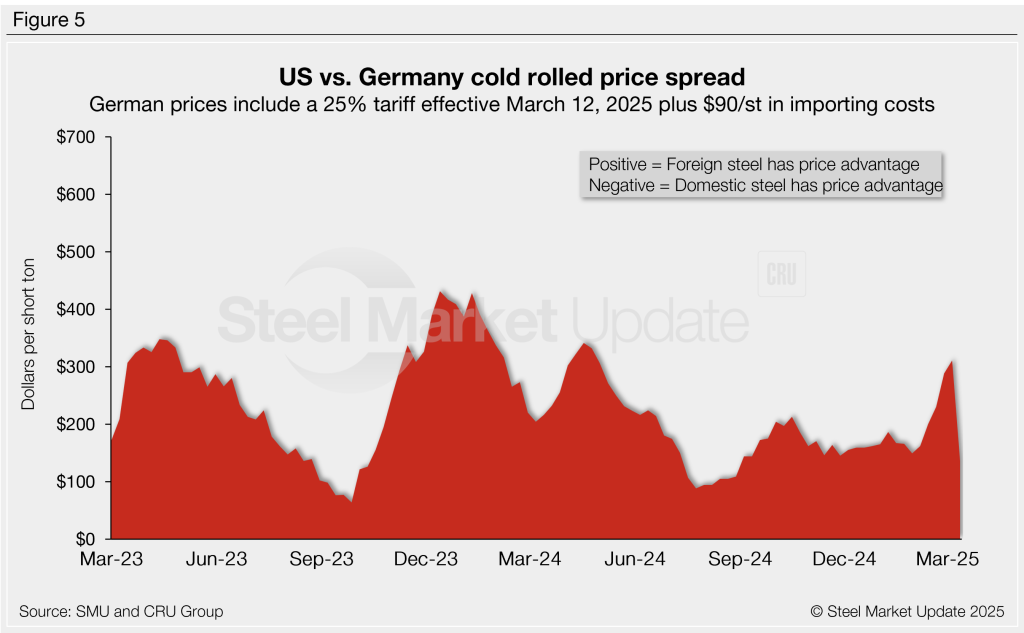
Notes: We reference domestic prices as FOB the producing mill, while foreign prices are CIF the port (Houston, NOLA, Savannah, Los Angeles, Camden, etc.). Inland freight from either a domestic mill or a port is important to keep in mind when deciding where to source from. It’s also important to factor in lead times. In most market cycles, domestic steel will deliver more quickly than foreign steel. Note also that, effective March 12, 2025, undiluted Section 232 tariffs were reinstated on steel imports. Therefore, the Japan, South Korea, German, and Italian price comparisons in this analysis now include a 25% tariff.






